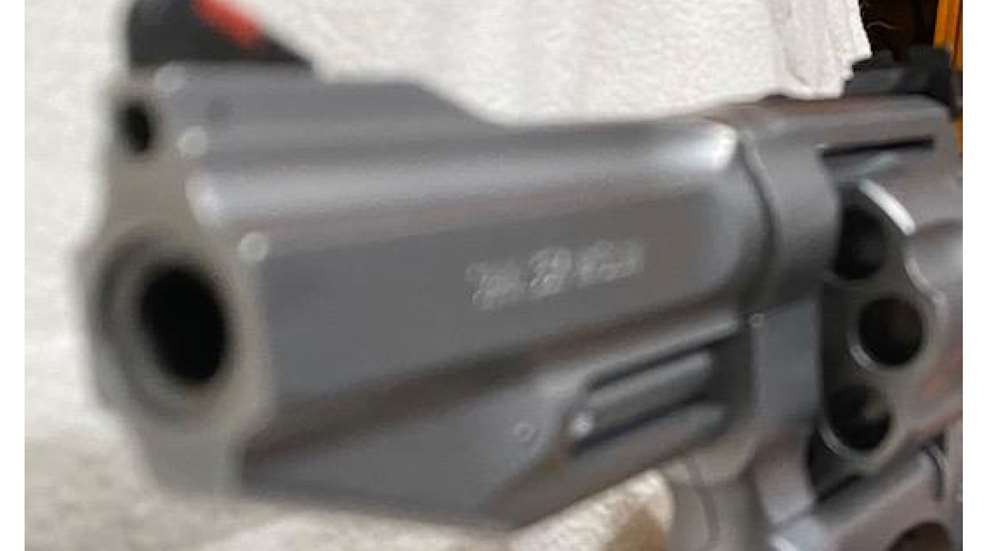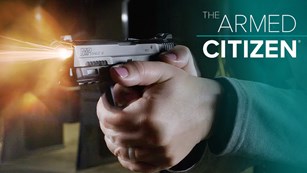
Safe gun handling is the cornerstone to all firearms training courses. All the safety rules revolve (pun intended) around preventing the damage or injury caused by the unintended discharge of a projectile from the muzzle. Without a doubt, the muzzle end of a firearm can be the most dangerous part of a gun.
But what about the other parts of a firearm? Even if you follow all the safety rules, accidents can happen. If you shoot long enough, you will experience that pinched finger when charging the slide of a pistol, or from inserting a magazine during a speed reload. More painful is a slide burn if your hand gets in the way of the slide after discharging your firearm. These accidents cause more embarrassment or pain than a lasting serious injury. The conditions described above usually can be dealt with by just applying an adhesive bandage.

The exception to this rule is failing to avoid the cylinder gap on a revolver. The cylinder gap is the area in front of a revolver’s cylinder, behind the barrel. Improper grip is the reason most injuries occur from the cylinder gap. These injuries can range from a third-degree burn to the loss of a finger.

When gripping a revolver, the strong hand (finger off the trigger) should be firmly wrapped around the grip, heel on the backstrap with middle, ring and pinky fingers across the front strap. The thumb of the shooting hand should lay horizontal, under the cylinder release, along the frame. Your weak hand should be placed of the opposite side of the grip, heel of the strong hand to heel of the weak hand. The fingers of the weak hand need to be wrapped firmly on top of the middle, ring, and pinky fingers of the strong hand. The thumb of the weak hand should firmly, while applying a slight pressure, rest on the thumb nail of the shooting hand.
The most important part of a revolver grip is ensuring that the fingers of the weak hand are wrapped around the front strap, on top of the strong-hand fingers. Injuries occur when the index or middle finger is extended along the frame and cylinder. When you do this, the fingers extend past the cylinder in front of the exposed opening. The injury occurs when the burning powder and gasses escape through the cylinder gap.

The cylinder gap is the space between the cylinder and the forcing cone of the barrel. This gap can range from 4 to 7 thousandths (0.004-0.007) of an inch. Different calibers have different pressures per square inch (PSI). The larger the pressure, the more intense the escaping gasses are from the cylinder gap. The Sporting Arms and Ammunition Manufacturers’ Institute (SAAMI) establishes the recommended maximum pressures of different calibers.
The most common self-defense calibers, for human and large animal predators, include .38 Spl. (17,000 PSI), .357 Mag. (35,000 PSI), .44 Magnum (36,000 PSI), .454 Casull (65,000 PSI), .460 S&W (65,000 PSI), and .500 S&W (65,000 PSI). As you can see, a .357 Mag, and .44 Mag. could cause a serious burn or even cut the skin of the finger. It also evident that the PSI from a .474 Casull, .460 S&W and a .500 S&W could destroy a finger.
As a general rule, the more powerful the cartridge, the higher the PSI. But keep in mind that there are a lot of factors that translate caliber, bullet weight and the power of the charge (standard vs. magnum) into the amount of PSI. For example, the 40-gr. .22 LR cartridge has a maximum pressure of 24,000 PSI. That is higher than the 158-gr. .357 Mag. at 35,000 PSI and the 250-gr .45 (Long) Colt at 14,000 PSI.
If seeing is believing, the internet is full of videos showing the destruction of fingers placed in front of a cylinder. A good representation of the power escaping from the cylinder gap in videos is a hot dog with a skewer run through the length of the hot dog, and placed in front of a cylinder gap. After viewing a few of these videos, you will see the importance of keeping your fingers away from the cylinder gap.
Shooting is supposed to be fun. Nothing can end that fun faster than needing to go to the emergency room to have your finger put back together. It is up to each shooter to his or her firearm and how to use it safely. This includes any parts of the firearm that you should avoid while shooting.















































